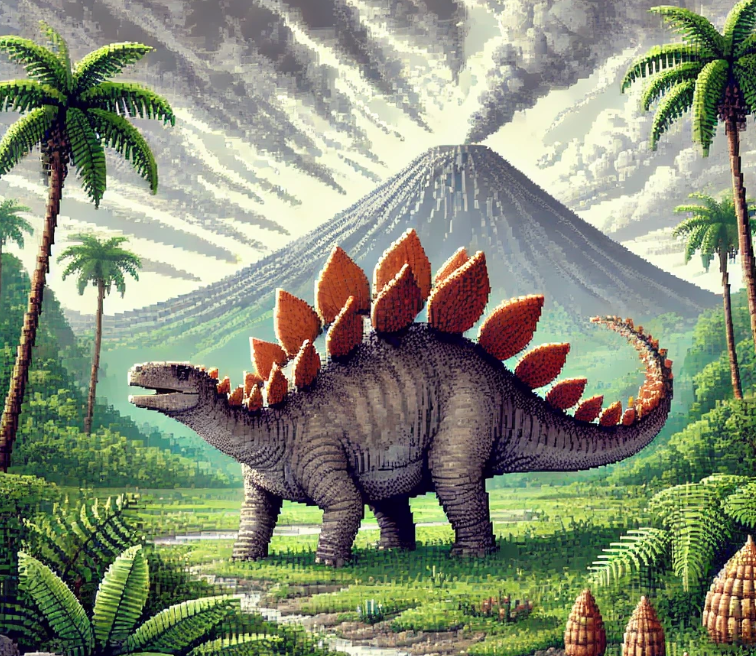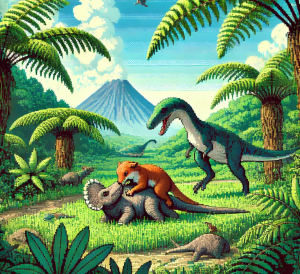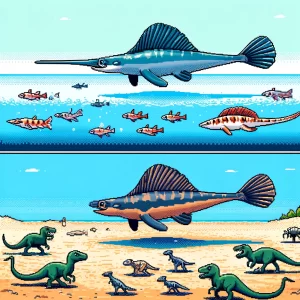
How Dinosaurs Rose to Dominate the Earth
Picture walking on a landscape filled with towering ferns, fiery volcanoes, and strange creatures battling for survival. Some 200 million years ago, this was Earth during the Triassic-Jurassic transition—a world in flux that paved the way for dinosaurs to rule. But how did dinosaurs rise to such dominance? A fascinating study of fossils from Poland reveals the untold story of their step-by-step climb to power.
Let’s uncover the mystery behind the dinosaurs’ ascent and explore what this remarkable period in Earth’s history teaches us about adaptation, survival, and the power of change.
What the Fossils Reveal
Scientists analyzed more than 500 fossils, including bromalites (fossilized digestive remains like poop and vomit), to piece together the ancient food webs of the Polish Basin. These fossils tell a compelling story of how dinosaurs evolved from small, opportunistic hunters to rulers of the ecosystem.
Here are the five phases of dinosaur evolution revealed by the study:
- Small Opportunists (Mid-Late Triassic)
Early dinosaur precursors shared their environment with a host of strange creatures like giant amphibians and plant-eating reptiles. At this stage, dinosaurs were minor players, small and omnivorous, feeding on insects and plants. - The First Predators (Mid-Late Norian)
As time went on, small carnivorous dinosaurs emerged, feasting on fish and smaller animals. These early theropods coexisted with older species like rauisuchians, the dominant predators of the time. - A Growing Presence (Late Norian–Earliest Rhaetian)
By this phase, dinosaurs diversified, with theropods (meat-eaters) growing larger and early herbivorous dinosaurs appearing. Fossilized tracks show evidence of their growing ecological importance. - Expanding Herbivores (Mid-Late Rhaetian)
Larger plant-eating dinosaurs, including the first sauropodomorphs (long-necked dinosaurs), began to dominate, replacing older herbivores like dicynodonts. These dinosaurs had broader diets, even eating burnt plants after wildfires. - Ecosystem Dominance (Earliest Jurassic)
Dinosaurs solidified their dominance with the emergence of massive theropods and a diverse array of herbivores. This was the era when dinosaurs became the true rulers of terrestrial ecosystems.
A Climate of Change
The dinosaurs’ rise was not just about evolution; it was about timing. During the late Triassic and early Jurassic, the Earth underwent dramatic climate shifts. Massive volcanic eruptions caused spikes in carbon dioxide, warming the planet and altering ecosystems. Forests changed, creating new opportunities for adaptable species like dinosaurs.
While other animals struggled to cope with these changes, dinosaurs seemed uniquely equipped to thrive. Their ability to eat a wide variety of foods and migrate across vast distances gave them a competitive edge.
Why It Matters Today
The story of dinosaurs’ rise offers valuable lessons for our own time:
- Adaptability Is Key: Dinosaurs succeeded by adapting to new environments and diets. In a world facing climate change, adaptability remains crucial for survival.
- The Power of Resilience: Dinosaurs rose after mass extinctions wiped out many competitors. Their story reminds us that new opportunities often arise from periods of great disruption.
- The Role of Ecosystems: Changes in vegetation directly influenced which species thrived. Protecting ecosystems today is essential to ensuring biodiversity and resilience.
The Mystery Continues
Despite these insights, questions remain. Did dinosaurs’ physiology give them an edge, or were they simply in the right place at the right time? What role did chance play in their dominance? As scientists uncover more fossils and use advanced tools like synchrotron imaging, the picture becomes clearer—but the full story is still being written.
Let’s Explore Together
What do you think made dinosaurs so successful? Could their story offer clues for how modern species—including humans—adapt to environmental changes?
Share your thoughts in the comments or on social media!
Questions to Ponder:
- How might the adaptability of dinosaurs apply to challenges humans face today?
- What other species in history remind you of dinosaurs’ rise to dominance?
- If you could witness one phase of dinosaur evolution, which would it be and why?
Let’s keep the conversation going as we explore the fascinating story of life on Earth together!
Explore and Learn with Science
Dive into groundbreaking research and inspiring stories with ‘This Week in Science’! Perfect for teachers and science enthusiasts, our free weekly newsletter expands your horizons in teaching and learning. Join us today and reshape your engagement with science. If you liked this blog, please share it! Your referrals help This Week in Science reach new readers.



